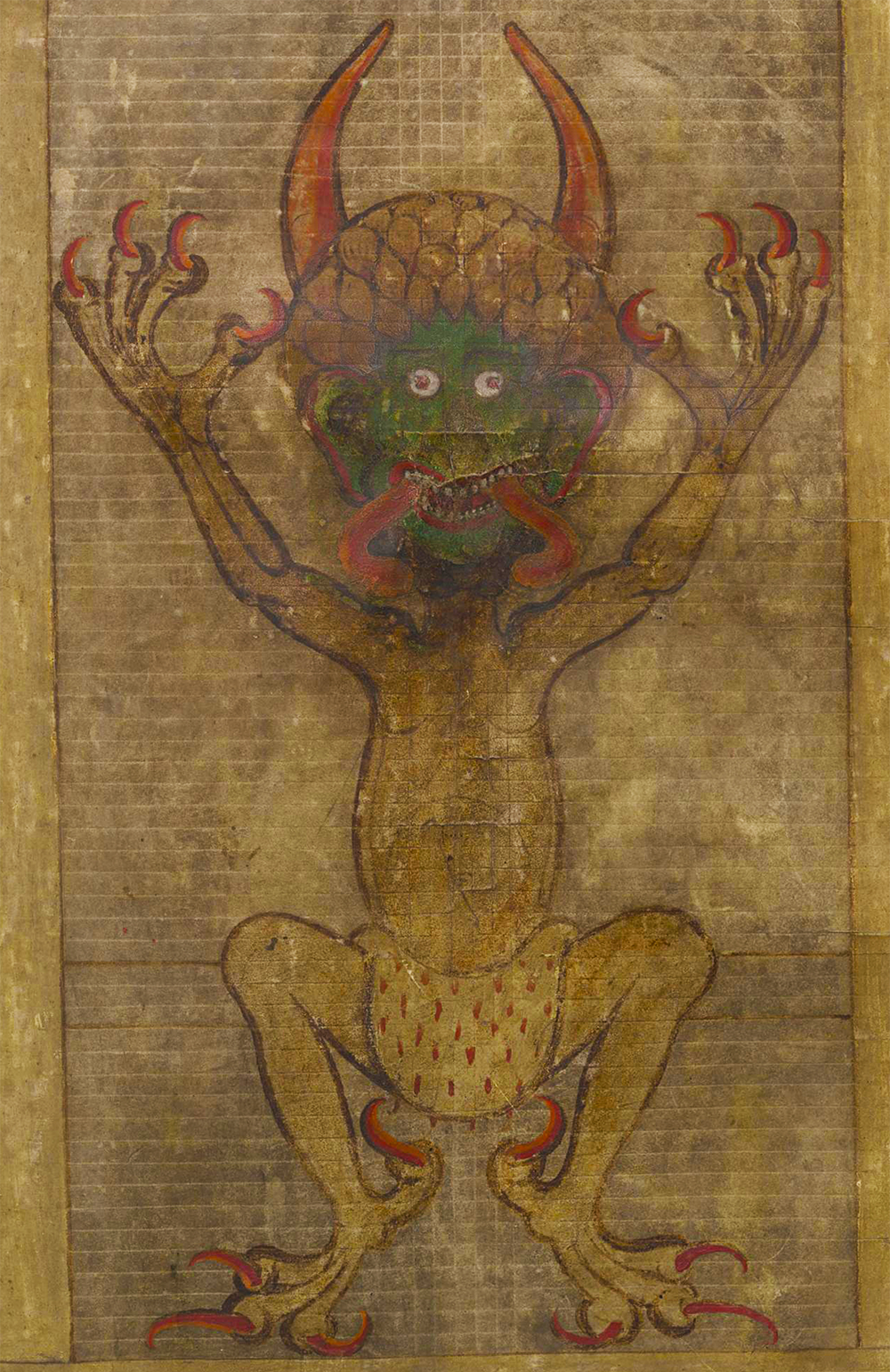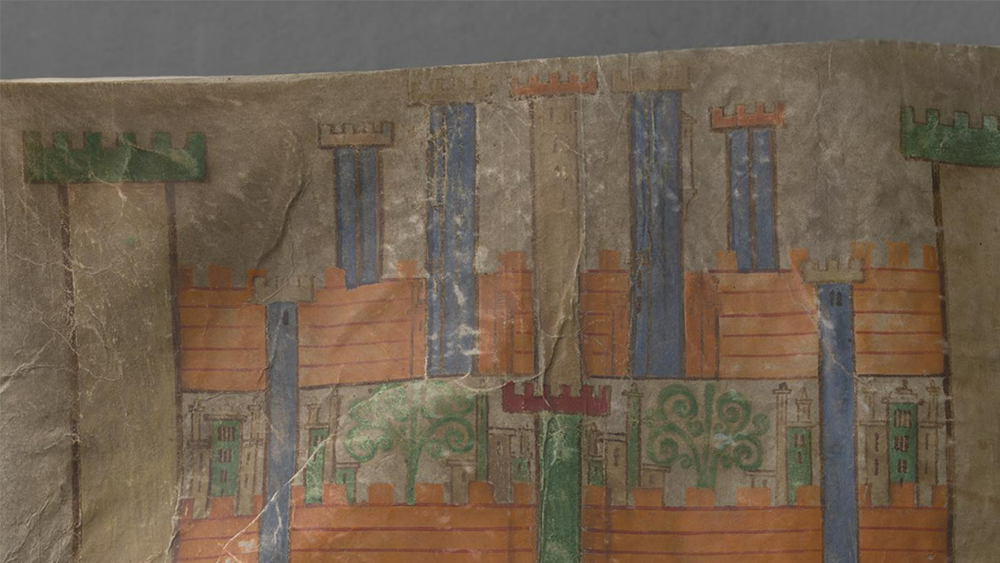If you’re a bit of a fan of ancient and mysterious manuscripts, perhaps with a little sprinkling of satanic legend, then the Codex Gigas, or the Devil’s Bible, is for you.
The legend behind it goes like this: In 13th-century Bohemia, a Christian monk named Herman broke his monastic vows and was subsequently sentenced to immurement, a highly sanitized way of saying he would be bricked up into a wall and left to die there. Rather than accept his fate, the story goes, he instead struck a deal with the Abbot. If he could create a book that contained all of humanity’s knowledge thus far before morning broke, he would not be left to die in a wall.
Though we certainly have more knowledge now, that was still an insurmountable task. According to the legend, Herman decided to sell his soul to the devil in return for a completed book. The next morning, he presented the Abbot with the book, complete with an unflattering tribute to the devil painted onto one page.

Satan drawn in the Codex Gigas.
That is the legend surrounding the 620-page-long text, which, of course, has no real basis in reality. But the text is interesting and mysterious in its own right.
Created in 13th century Bohemia, now a region of the Czech Republic, the manuscript is a mix of the Old and New Testaments, a Middle Age textbook for teaching medicine known as Ars medicinae, chronicles of history, the writings of Cosmas of Prague, and information on exorcisms for that extra creep factor.
Though more analysis of the text is needed, some have suggested that it is in fact the work of a single author, though of course not over the period of a single night.
“If the scribe worked for six hours a day and wrote six days a week this means that the manuscript could have taken about five years to complete,” the National Library of Sweden explains, per Atlas Obscura.
“If the scribe was a monk he may only have been able to work for about three hours a day, and this means that the manuscript could have taken 10 years to write. As the scribe may also have ruled the lines to guide the writing before he began to write (it probably took several hours to rule one leaf), this extends the period it took to complete the manuscript. The scribe also decorated the manuscript, so this all means that the manuscript probably took at least 20 years to finish, and could even have taken 30.”
A particularly odd detail comes just before a depiction of heaven and the devil. Here, the scribe writes a long list of sinful confessions in all caps, before dropping the visions of the afterlife and Satan.

Heaven, according to the Devil’s Bible.
While we have a good idea of what it’s not – newsflash, Satan isn’t hanging around waiting to knock out books like a frustrated freelance ghost writer – the manuscript remains pretty mysterious. We know that it was likely authored in the early 1200s and in Bohemia, and was seen as one of the wonders of the world around the end of the century. But the first known owner – the Podlažice Monastery – was too small and poor for it to be made on site, making monks at the monastery unlikely authors of it.
The original author remains a mystery, though manuscript experts told a National Geographic documentary that handwriting analysis and attribution to “hermann inclusus” (Hermann the recluse) indicated it was a single author. In all likelihood, bar another find, more analysis, or Satan popping up to claim credit, the authorship of the Devil’s Bible will likely remain unknown.
Source Link: The 13th Century "Codex Gigas" Or "The Devil's Bible" Is The Subject Of An Unsettling Legend